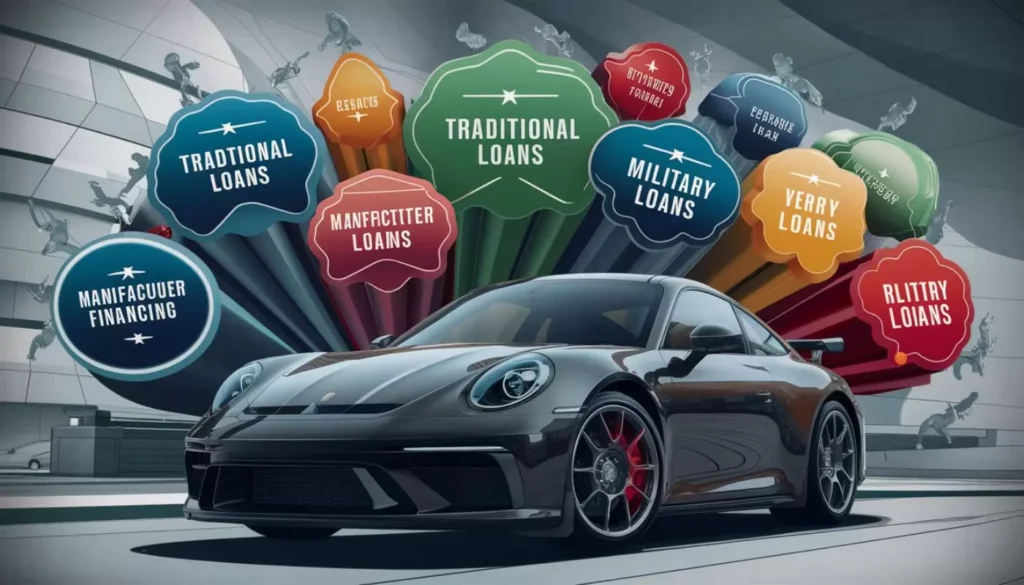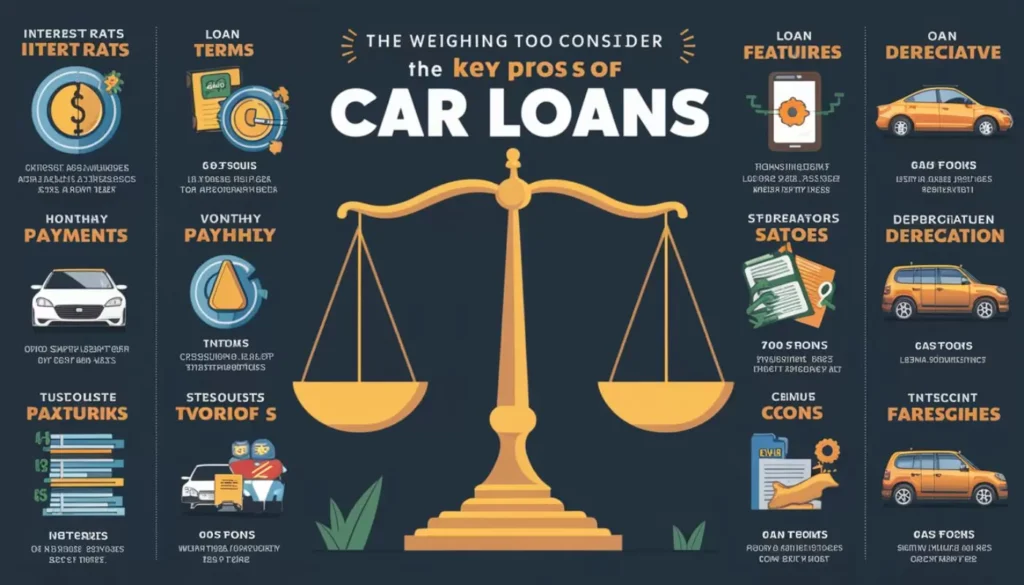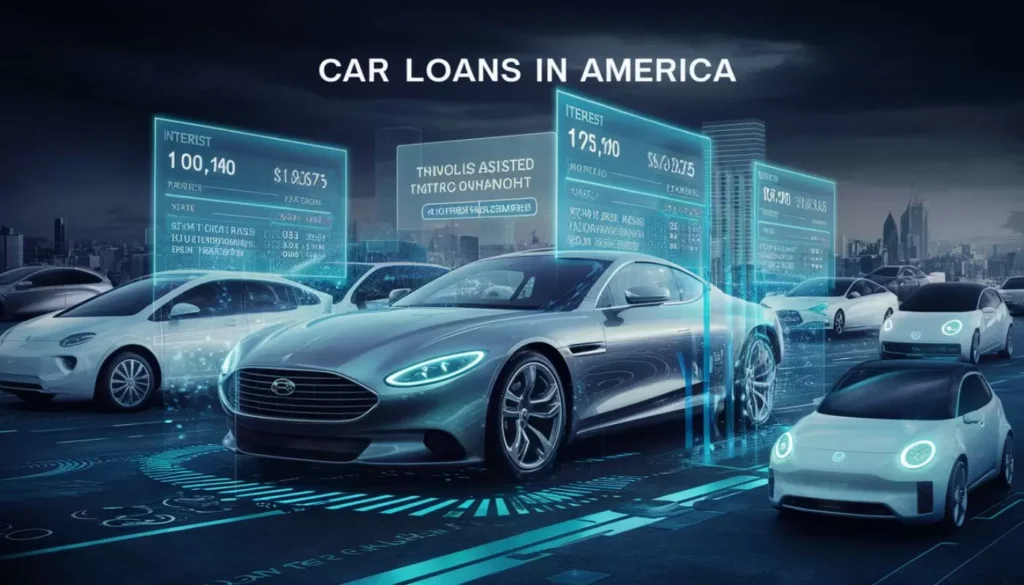In today’s fast-paced world, owning a car is often seen as a necessity rather than a luxury. For many Americans, the dream of driving off the lot in a shiny new vehicle is tempered by the reality of financing. Car loans have become a ubiquitous part of the auto-buying experience, offering both opportunities and pitfalls for consumers. This comprehensive guide will explore the ins and outs of car loans, helping you make an informed decision about your next vehicle purchase.
What Are Car Loans?
At its core, a car loan is a financial product that allows you to borrow money to purchase a vehicle. Instead of paying the full price upfront, you agree to repay the loan amount plus interest over a set period. This financing option has revolutionized the way Americans buy cars, making vehicle ownership more accessible to a broader range of consumers.
How Car Loans Work in the United States
In the U.S., car loans typically involve a lender (such as a bank, credit union, or finance company) providing funds to purchase a vehicle. The borrower then repays this amount through regular instalments, usually monthly. The loan terms can vary widely, with repayment periods ranging from 36 to 84 months or even longer.
Here’s a basic breakdown of the car loan process:
- Application: You apply for a loan, providing personal and financial information.
- Credit check: The lender reviews your credit history and score.
- Approval: If approved, you receive loan offers with different terms.
- Selection: You choose the loan that best fits your needs.
- Purchase: The lender pays the car seller, and you take ownership.
- Repayment: You make regular payments until the loan is fully repaid.
Types of Car Loans Available to American Consumers

The U.S. auto finance market offers several types of car loans to suit different needs:
- New car loans: Typically offer lower interest rates due to the vehicle’s higher market value.
- Used car loans: May have slightly higher rates but allow for more affordable vehicle purchases.
- Refinancing loans: Enable borrowers to replace an existing car loan with new, potentially better terms.
- Secured loans: Use the vehicle as collateral, often resulting in lower interest rates.
- Unsecured loans: Don’t require collateral but may have higher rates due to increased lender risk.
The Pros of Car Loans
Car loans offer several advantages that make them an attractive option for many buyers:
Immediate Vehicle Ownership
One of the most significant benefits of a car loan is the ability to drive your chosen vehicle immediately, rather than waiting years to save up the full purchase price. This immediate access can be crucial for those who need reliable transportation for work or family obligations.
Building Credit History
Regular, on-time car loan repayments can significantly boost your credit score. A positive payment history demonstrates financial responsibility to future lenders, potentially opening doors to better loan terms and credit card offers down the line.
Potential Tax Benefits
In some cases, the interest paid on a car loan used for business purposes may be tax-deductible. While this doesn’t apply to personal use vehicles, it’s worth considering for those who use their cars for work.
Flexibility in Car Choice
Car loans allow you to consider a wider range of vehicles, including newer models with advanced safety features and better fuel efficiency. This flexibility can lead to long-term savings and improved driving experiences.
Preserving Savings for Other Investments
By financing your car purchase, you can keep your savings intact for other purposes, such as building an emergency fund or investing in potentially higher-yield opportunities.
The Cons of Car Loans
Despite their benefits, car loans come with several drawbacks that warrant careful consideration:
Related This : How Long Does Car Finance Approval Take?
Long-term Financial Commitment
A car loan typically represents a significant financial obligation lasting several years. This long-term commitment can impact your budget and limit financial flexibility for other goals or unexpected expenses.
Interest Costs Over Time
The total cost of a car loan can be substantially higher than the vehicle’s purchase price due to interest charges. Here’s an example to illustrate:
| Loan Amount | Interest Rate | Loan Term | Monthly Payment | Total Interest Paid | Total Cost |
| $25,000 | 4.5% | 60 months | $466 | $2,960 | $27,960 |
As you can see, even with a relatively low interest rate, the additional cost can be significant.
Risk of Being “Underwater” on the Loan
Cars depreciate quickly, especially in the first few years of ownership. This rapid value loss can lead to a situation where you owe more on the loan than the car is worth, known as being “underwater” or having negative equity.
Depreciation Concerns
The moment you drive a new car off the lot, it begins to lose value. This depreciation continues throughout the life of the vehicle, meaning you’re paying interest on an asset that’s decreasing in value.
Impact on Debt-to-Income Ratio
Adding a car loan to your financial obligations increases your debt-to-income ratio. This can affect your ability to qualify for other loans, such as a mortgage, and may impact your overall financial health.
Factors to Consider When Weighing Car Loan Pros and Cons

When evaluating whether a car loan is right for you, consider the following:
Your Current Financial Situation
Assess your income stability, existing debts, and monthly expenses. Can you comfortably afford the loan repayments without straining your budget?
Credit Score Implications
Your credit score plays a crucial role in determining your loan terms. A higher score often leads to better interest rates and more favorable terms.
New vs. Used Car Considerations
New cars typically come with lower interest rates but higher price tags and faster depreciation. Used cars may offer better value but could have higher maintenance costs.
Loan Terms and Interest Rates
Longer loan terms result in lower monthly payments but higher overall interest costs. Compare offers from multiple lenders to find the best combination of terms and rates.
Down Payment Options
A larger down payment can reduce your loan amount and potentially secure better terms. However, it’s important to balance this against maintaining your savings.
Alternatives to Traditional Car Loans
Before committing to a car loan, consider these alternatives:
Leasing: A Different Approach
Leasing allows you to drive a new car for a fixed period, typically with lower monthly payments than a loan. However, you don’t build equity in the vehicle.
Saving Up to Buy Outright
While it requires patience, saving to purchase a car with cash eliminates interest costs and long-term debt obligations.
Peer-to-Peer Lending Options
Platforms like Prosper and LendingClub connect borrowers with individual lenders, potentially offering more flexible terms than traditional loans.
Credit Union Offerings
Credit unions often provide more favorable loan terms to their members compared to large banks.
Read This : Life Insurance Survey 2023: Why 44% of Australians Lack Coverage and What It Means for Americans
Tips for Getting the Best Car Loan Deal
To maximize the benefits and minimize the drawbacks of car loans, follow these tips:
- Shop around for rates: Don’t settle for the first offer you receive. Compare rates from multiple lenders, including banks, credit unions, and online lenders.
- Understand your credit score: Check your credit report before applying for loans. Address any errors and work on improving your score if necessary.
- Negotiate loan terms: Don’t be afraid to negotiate interest rates, loan duration, and other terms with lenders.
- Consider pre-approval: Getting pre-approved for a loan can give you leverage when negotiating with car dealers.
- Read the fine print: Carefully review all loan documents, paying attention to fees, prepayment penalties, and other potential costs.
Real-Life Scenarios: Car Loans in Action
Case Study: The Benefits of a Well-Planned Car Loan
Sarah, a 28-year-old marketing professional, needed a reliable car for her daily commute. With a good credit score of 750, she secured a $20,000 loan at 3.5% APR for 48 months. Her monthly payment of $448 fit comfortably within her budget, and she was able to build her credit while enjoying a newer, more fuel-efficient vehicle.
Cautionary Tale: When Car Loans Go Wrong
John, eager to impress his friends, took out a 72-month loan for a luxury car he couldn’t afford. With a high interest rate due to his mediocre credit score, his monthly payments stretched his budget to the breaking point. Two years later, he found himself struggling to make payments and owing more than the car was worth.
The Future of Car Loans in America

The auto financing landscape is evolving rapidly, influenced by technological advancements and changing consumer preferences:
- Digital lending platforms are streamlining the loan application and approval process.
- The rise of electric vehicles may lead to new financing models that account for lower maintenance costs and different depreciation patterns.
- Alternative credit scoring methods could make car loans more accessible to those with limited credit history.
Conclusion
Car loans can be a powerful tool for achieving vehicle ownership, but they come with both advantages and risks. By understanding the pros and cons, considering alternatives, and carefully evaluating your financial situation, you can make an informed decision that aligns with your long-term financial goals.
Remember, the key to a successful car loan experience lies in thorough research, careful budgeting, and a clear understanding of the terms you’re agreeing to. Whether you choose to finance your next vehicle or explore other options, prioritize your financial health and make a decision that you’ll be comfortable with for years to come.
FAQs About Car Loans
How do car loans affect my credit score?
Regular, on-time payments can improve your credit score, while missed payments can have a negative impact.
Can I get a car loan with bad credit?
Yes, but you may face higher interest rates and less favorable terms. Consider improving your credit before applying or looking into subprime lenders.
What’s the difference between dealer financing and bank loans?
Dealer financing often offers convenience but may have higher rates. Bank loans typically provide more competitive rates but require more legwork.
How much should I put down on a car loan?
A down payment of 20% is often recommended to avoid being underwater on your loan, but any amount can help reduce your monthly payments and total interest paid.
Is it better to get a longer or shorter loan term?
Shorter terms usually mean higher monthly payments but less total interest paid. Longer terms offer lower monthly payments but cost more in interest over time. Choose based on your budget and financial goals.

Marathi author Anju Mary has made a mark in the literary world with her innovative storytelling and deep passion for reading. Her unique narrative style and creative approach offer readers a distinctive and enriching experience, solidifying her reputation as a prominent writer.











